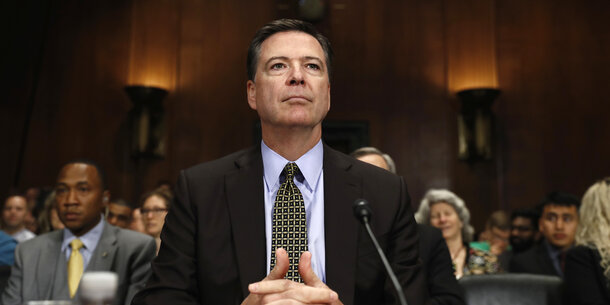Introduction
Racial disparities have long pervaded every step of the criminal justice process, from police stops, searches, arrests, shootings and other uses of force to charging decisions, wrongful convictions, and sentences. footnote1_Q7H-RCfunuYhWAFjHoJD10Z0l8ospMYMq9JQQUVdvQ_juzaYPeC7ykN1 Joseph Guzman, “California Police Stop Black Drivers at Higher Rates, Analysis Finds,” Changing America, The Hill, January 3, 2020, https://thehill.com/changing-america/respect/equality/476685-california-police-stop-black-drivers-at-higher-rates; Brad Heath, “Racial Gap in U.S. Arrest Rates: ‘Staggering Disparity,’” USA Today, November 18, 2014, https://www.usatoday.com/story/news/nation/2014/11/18/ferguson-black-arrest-rates/19043207/; German Lopez and Javier Zarracina, “Study: Black People Are 7 Times More Likely than White People to Be Wrongly Convicted of Murder,” Vox, March 7, 2017, https://www.vox.com/policy-and-politics/2017/3/7/14834454/exoneration-innocence-prison-racism; German Lopez, “There Are Huge Racial Disparities in How US Police Use Force,” Vox, November 14, 2018, https://www.vox.com/identities/2016/8/13/17938186/police-shootings-killings-racism-racial-disparities; Timothy Williams, “Black People Are Charged at a Higher Rate Than Whites. What if Prosecutors Didn’t Know Their Race?” New York Times, June 12, 2019, https://www.nytimes.com/2019/06/12/us/prosecutor-race-blind-charging.html; and Christopher Ingraham, “Black Men Sentenced to More Time for Committing the Exact Same Crime as a White Person, Study Finds,” Washington Post, November 16, 2017, https://www.washingtonpost.com/news/wonk/wp/2017/11/16/black-men-sentenced-to-more-time-for-committing-the-exact-same-crime-as-a-white-person-study-finds/. As a result, many have concluded that a structural or institutional bias against people of color, shaped by long-standing racial, economic, and social inequities, infects the criminal justice system. footnote2_DwpRfidxaKrWt8iIKJNfpBGSdpP8Z75aeWNydUPIW8_bG12JwlXcSXH2 Radley Balko, “There’s Overwhelming Evidence that the Criminal Justice System Is Racist. Here’s the Proof,” Washington Post, June 10, 2020, https://www.washingtonpost.com/news/opinions/wp/2018/09/18/theres-overwhelming-evidence-that-the-criminal-justice-system-is-racist-heres-the-proof/. These systemic inequities can also instill implicit biases — unconscious prejudices that favor in-groups and stigmatize out-groups — among individual law enforcement officials, influencing their day-to-day actions while interacting with the public.
Police reforms, often imposed after incidents of racist misconduct or brutality, have focused on addressing these unconscious manifestations of bias. The U.S. Department of Justice (DOJ), for example, has required implicit bias training as part of consent decrees it imposes to root out discriminatory practices in law enforcement agencies. Such training measures are designed to help law enforcement officers recognize these unconscious biases in order to reduce their influence on police behavior.
These reforms, while well-intentioned, leave unaddressed an especially harmful form of bias, which remains entrenched within law enforcement: explicit racism. Explicit racism in law enforcement takes many forms, from membership or affiliation with violent white supremacist or far-right militant groups, to engaging in racially discriminatory behavior toward the public or law enforcement colleagues, to making racist remarks and sharing them on social media. While it is widely acknowledged that racist officers subsist within police departments around the country, federal, state, and local governments are doing far too little to proactively identify them, report their behavior to prosecutors who might unwittingly rely on their testimony in criminal cases, or protect the diverse communities they are sworn to serve.
Efforts to address systemic and implicit biases in law enforcement are unlikely to be effective in reducing the racial disparities in the criminal justice system as long as explicit racism in law enforcement continues to endure. There is ample evidence to demonstrate that it does.
In 2017, the FBI reported that white supremacists posed a “persistent threat of lethal violence” that has produced more fatalities than any other category of domestic terrorists since 2000. footnote3_f8mTrA66F6BmnaUyPQXnL34iNxHoAvkT3kgKW-DA0_kRqRHMlPNbdg3 Federal Bureau of Investigation and Department of Homeland Security, Joint Intelligence Bulletin, White Supremacist Extremism Poses Persistent Threat of Lethal Violence, May 10, 2017, https://www.documentcloud.org/documents/3924852-White-Supremacist-Extremism-JIB.html. Alarmingly, internal FBI policy documents have also warned agents assigned to domestic terrorism cases that the white supremacist and anti-government militia groups they investigate often have “active links” to law enforcement officials. footnote4_gtOclC2MJkbFRmhxTHS4Tjhh2rouQq5O1cADxTCmrwc_cEKP69IxP3uv4 Federal Bureau of Investigation, Counterterrorism Division, Counterterrorism Policy Directive and Policy Guide, April 1, 2015 (updated November 18, 2015), 89, https://assets.documentcloud.org/documents/3423189/CT-Excerpt.pdf.
The harms that armed law enforcement officers affiliated with violent white supremacist and anti-government militia groups can inflict on American society could hardly be overstated. Yet despite the FBI’s acknowledgement of the links between law enforcement and these suspected terrorist groups, the Justice Department has no national strategy designed to identify white supremacist police officers or to protect the safety and civil rights of the communities they patrol.
Obviously, only a tiny percentage of law enforcement officials are likely to be active members of white supremacist groups. But one doesn’t need access to secretive intelligence gathered in FBI terrorism investigations to find evidence of overt and explicit racism within law enforcement. Since 2000, law enforcement officials with alleged connections to white supremacist groups or far-right militant activities have been exposed in Alabama, California, Connecticut, Florida, Illinois, Louisiana, Michigan, Nebraska, Oklahoma, Oregon, Texas, Virginia, Washington, West Virginia, and elsewhere. footnote5_rTFmKWNt2YOC66X3BivP8al2zMLA7lmcuKvBbocJOnI_dzsiQ8Mctu5t5 Becky Bratu, “Two Alabama Officers Put on Leave for Alleged Ties to ‘Hate Group,’” NBC News, June 17, 2015, https://www.nbcnews.com/news/crime-courts/two-alabama-officers-put-leave-alleged-ties-hate-group-n377421; Michael Winter, “KKK Membership Sinks 2 Florida Cops,” USA Today, July 14, 2014, https://www.usatoday.com/story/news/nation/2014/07/14/florid-police-kkk/12645555/; Michelle Fox, “Texas Officers Fired for Membership in KKK,” ABC News, January 7, 2006, https://abcnews.go.com/US/story?id=93046&page=1; Andy Campbell, “KKK Cop Fired After Nazi Salute Photo Surfaces,” Huffington Post, September 3, 2015, https://www.huffpost.com/entry/kkk-cop-fired-nazi-salute_n_55e885d9e4b0c818f61b24c2; Angela Helm, “Color Me Shocked: 2 Virginia Police Officers Fired for Ties to White Supremacist Orgs,” Root, April 22, 2019, https://www.theroot.com/color-me-shocked-2-virginia-police-officers-fired-for-1834211339; Phil Helsel, “Three Fired Over Nazi Salute Photo with West Virginia Corrections Employee,” NBC News, December 6, 2019, https://www.nbcnews.com/news/us-news/three-fired-over-nazi-salute-photo-west-virginia-corrections-employees-n1097566; State v. Henderson, 277 Neb. 240 (2009), https://caselaw.findlaw.com/ne-supreme-court/1479842.html; Mariel Padilla, “Michigan Police Officer Is Terminated After K.K.K. Application Was Found in His Home,” New York Times, September 13, 2019, https://www.nytimes.com/2019/09/13/us/officer-charles-anderson-ku-klux-klan.html; Nick Budnick, “The Cop Who Liked Nazis,” Willamette Week, February 10, 2004 (updated January 24, 2017), https://www.wweek.com/portland/article-2933-the-cop-who-liked-nazis.html; Paighten Harkins, “Interim Colbert Police Chief to Resign amid Report of Connection to Neo-Nazi Websites,” Tulsa World, August 27, 2017, https://www.tulsaworld.com/homepagelatest/interim-colbert-police-chief-to-resign-amid-report-of-connection/article_98d1bd9e-9ad8–553e-84cd-8d63d360e0c8.html; Katie Shepherd, “Clark County Sheriff Deputy Fired After Wearing a Proud Boys Sweatshirt,” Willamette Week, July 20, 2018, https://www.wweek.com/news/courts/2018/07/20/clark-county-sheriff-deputy-fired-after-wearing-a-proud-boys-sweatshirt/; Michael Kunzelman, “Connecticut Police Officer: I Quit Proud Boys Over Fears of ‘Far-Left’ Attacks,” Hartford Courant, November 13, 2019, https://www.courant.com/news/connecticut/hc-news-connecticut-proud-boys-police-officer-20191113–73r6pb7zv5halbwja7le5jvjwu-story.html; George Joseph, Raven Rakia, and Ethan Corey, “Claims of Racism and Brutality Dog Los Angeles County Sheriff ‘Deputy Gangs,’” Appeal, September 28, 2018, https://theappeal.org/claims-of-racism-brutality-dog-los-angeles-county-sheriff-deputy-gangs/; Richard Winton, “O.C. Deputy Under Investigation After Wearing Extremist Paramilitary Patch at George Floyd Protest,” Los Angeles Times, June 3, 2020, https://www.latimes.com/california/story/2020–06–03/orange-county-deputy-three-percenters-patch-george-floyd-protest; and “CPD Investigating After Officer Wore Extremist Militia Logo to Downtown Protest Saturday,” CBS Chicago, June 9, 2020, https://www.msn.com/en-us/news/us/cpd-investigating-after-officer-wore-extremist-militia-logo-to-downtown-protest-saturday/ar-BB15dByT. Research organizations have uncovered hundreds of federal, state, and local law enforcement officials participating in racist, nativist, and sexist social media activity, which demonstrates that overt bias is far too common. footnote6_61Puv4oOBeSZgo3h6SKtYRdSefiTlAip-eikx5aK4Yc_g70zaaBkeJgW6 Rashad Robinson, “We Can’t Trust Police to Protect Us from Racist Violence. They Contribute to It,” Guardian, August 21, 2019, https://www.theguardian.com/commentisfree/2019/aug/21/police-white-nationalists-racist-violence. These officers’ racist activities are often known within their departments, but only result in disciplinary action or termination if they trigger public scandals.
Few law enforcement agencies have policies that specifically prohibit affiliating with white supremacist groups. Instead, these officers typically face discipline, if at all, for more generally defined prohibitions against conduct detrimental to the department or for violations of anti-discrimination regulations or social media policies. Firings often lead to prolonged litigation, with dismissed officers claiming violations of their First Amendment speech and association rights. Most courts have upheld dismissals of police officers who have affiliated with racist or militant groups, following Supreme Court decisions limiting free speech rights for public employees to matters of public concern. footnote7_hOarib0RuZXoFeSr2nRx0bf4sSBvLdE25Zwc7jQXc2s_rE0SuJKtSOGj7 See, e.g., Pickering v. Board of Education, 391 U.S. 563 (1968); and Garcetti v. Ceballos, 547 U.S. 410, 417 (2006). Courts have given law enforcement agencies even greater latitude to restrict speech and association, citing their “heightened need for order, loyalty, morale and harmony.” footnote8_mvz6JBiAMoJszSxIvZz9TxH6P3AsTvm9XimZrAC1lz0_ueyLRNFETVGk8 See, e.g., Garcetti, 547 U.S. 410, 417; Oladeinde v. City of Birmingham, 230 F.3d 1275, 1293 (11th Cir. 2000); Doggrell v. City of Anniston, 277 F. Supp. 3d 1239 (N.D. Ala. 2017), https://casetext.com/case/doggrell-v-city-of-anniston-1; and State v. Henderson, 277 Neb. 240. See also Robin D. Barnes, “Blue by Day and White by (K)night: Regulating the Political Affiliations of Law Enforcement and Military Personnel,” Iowa Law Review 81 (1996): 1085.
Some officers who have associated with militant groups or engaged in racist behavior have not been fired, however, or have had their dismissals overturned by courts or in arbitration. Such due process is required to ensure integrity and equity in the disciplinary process and protect falsely accused police officers from unjust punishments. Certainly, there will be cases where an officer’s behavior can be corrected with remedial measures short of termination. But leaving officers tainted by racist behavior in a job with immense discretion to take a person’s life and liberty requires a detailed supervision plan to mitigate the potential threats they pose to the communities they police, implemented with sufficient transparency to restore public trust.
Progress in removing explicit racism from law enforcement has clearly been made since the civil rights era, when Ku Klux Klan–affiliated officers were far too common. But, as Georgetown University law professor Vida B. Johnson argues, “The system can never achieve its purported goal of fairness while white supremacists continue to hide within police departments.” footnote9_DItFh5-Wi-WJ2T2jV81vmFlH4jJs9kwLaS6KYkrcU4_lcETLBfjAVXw9 Vida B. Johnson, “KKK in the PD: White Supremacists in Law Enforcement and What to Do About It,” Lewis and Clark Law Review 23 (2019): 211. Trust in the police remains low among people of color, who are often victims of police violence and abuse and are disproportionately underserved as victims of crime. footnote10_cvuxYvHfButR9LbT-lGZPJJKdI-oGlSrQGaVaErrQM_iBXER8QwZE7V10 Vida B. Johnson, “The Epidemic of White Supremacist Police,” Appeal, August 7, 2017, https://theappeal.org/the-epidemic-of-white-supremacist-police-4992cb7ad97a/. The failure of law enforcement to adequately respond to racist violence and hate crimes or properly police white supremacist riots in cities across the United States over the last several years has left many Americans concerned that bias in law enforcement is pervasive. footnote11_2EwPzCOlJm8FXmwTz3988bxooMhfon5pEH86KCJjLg_zrAkJHQz0pbL11 See, e.g., Matt Coker, “7 Charged in Anaheim KKK Melee — But Stabby Klanner Not One of Them,” OC Weekly, July 1, 2016, https://www.ocweekly.com/7-charged-in-anaheim-kkk-melee-but-stabby-klanner-not-one-of-them-7305812–2/; James Queally, “Ku Klux Klan Rally in Anaheim Erupts in Violence; 3 Are Stabbed and 13 Arrested,” Los Angeles Times, February 26, 2016, http://www.latimes.com/local/lanow/la-me-ln-klan-rally-in-anaheim-erupts-in-violence-one-man-stabbed-20160227-story.html; Sam Levin, “How a California Officer Protected Neo-Nazis and Targeted Their Victims,” Guardian, January 25, 2019, https://www.theguardian.com/us-news/2019/jan/25/california-police-neo-nazis-antifa-protest; Frank John Tristan, “Huntington Beach Pro-Trump March Turns into Attack on Anti-Trump Protestors,” OC Weekly, March 26, 2017, https://www.ocweekly.com/huntington-beach-pro-trump-march-turns-into-attack-on-anti-trump-protesters-press-7991623/; Frances Robles, “As White Nationalist in Charlottesville Fired, Police ‘Never Moved,’” New York Times, August 25, 2017, https://www.nytimes.com/2017/08/25/us/charlottesville-protest-police.html; and Arun Gupta, “Riotlandia: Why Portland has Become the Epicenter of Far-Right Violence,” Intercept, August 26, 2019, https://theintercept.com/2019/08/16/portland-far-right-rally/. This report examines the law enforcement response to racist behavior, white supremacy, and far-right militancy within the ranks and recommends policy solutions to inform a more effective response.
End Notes
-
footnote1_Q7H-RCfunuYhWAFjHoJD10Z0l8ospMYMq9JQQUVdvQ_juzaYPeC7ykN
1
Joseph Guzman, “California Police Stop Black Drivers at Higher Rates, Analysis Finds,” Changing America, The Hill, January 3, 2020, https://thehill.com/changing-america/respect/equality/476685-california-police-stop-black-drivers-at-higher-rates; Brad Heath, “Racial Gap in U.S. Arrest Rates: ‘Staggering Disparity,’” USA Today, November 18, 2014, https://www.usatoday.com/story/news/nation/2014/11/18/ferguson-black-arrest-rates/19043207/; German Lopez and Javier Zarracina, “Study: Black People Are 7 Times More Likely than White People to Be Wrongly Convicted of Murder,” Vox, March 7, 2017, https://www.vox.com/policy-and-politics/2017/3/7/14834454/exoneration-innocence-prison-racism; German Lopez, “There Are Huge Racial Disparities in How US Police Use Force,” Vox, November 14, 2018, https://www.vox.com/identities/2016/8/13/17938186/police-shootings-killings-racism-racial-disparities; Timothy Williams, “Black People Are Charged at a Higher Rate Than Whites. What if Prosecutors Didn’t Know Their Race?” New York Times, June 12, 2019, https://www.nytimes.com/2019/06/12/us/prosecutor-race-blind-charging.html; and Christopher Ingraham, “Black Men Sentenced to More Time for Committing the Exact Same Crime as a White Person, Study Finds,” Washington Post, November 16, 2017, https://www.washingtonpost.com/news/wonk/wp/2017/11/16/black-men-sentenced-to-more-time-for-committing-the-exact-same-crime-as-a-white-person-study-finds/. -
footnote2_DwpRfidxaKrWt8iIKJNfpBGSdpP8Z75aeWNydUPIW8_bG12JwlXcSXH
2
Radley Balko, “There’s Overwhelming Evidence that the Criminal Justice System Is Racist. Here’s the Proof,” Washington Post, June 10, 2020, https://www.washingtonpost.com/news/opinions/wp/2018/09/18/theres-overwhelming-evidence-that-the-criminal-justice-system-is-racist-heres-the-proof/. -
footnote3_f8mTrA66F6BmnaUyPQXnL34iNxHoAvkT3kgKW-DA0_kRqRHMlPNbdg
3
Federal Bureau of Investigation and Department of Homeland Security, Joint Intelligence Bulletin, White Supremacist Extremism Poses Persistent Threat of Lethal Violence, May 10, 2017, https://www.documentcloud.org/documents/3924852-White-Supremacist-Extremism-JIB.html. -
footnote4_gtOclC2MJkbFRmhxTHS4Tjhh2rouQq5O1cADxTCmrwc_cEKP69IxP3uv
4
Federal Bureau of Investigation, Counterterrorism Division, Counterterrorism Policy Directive and Policy Guide, April 1, 2015 (updated November 18, 2015), 89, https://assets.documentcloud.org/documents/3423189/CT-Excerpt.pdf. -
footnote5_rTFmKWNt2YOC66X3BivP8al2zMLA7lmcuKvBbocJOnI_dzsiQ8Mctu5t
5
Becky Bratu, “Two Alabama Officers Put on Leave for Alleged Ties to ‘Hate Group,’” NBC News, June 17, 2015, https://www.nbcnews.com/news/crime-courts/two-alabama-officers-put-leave-alleged-ties-hate-group-n377421; Michael Winter, “KKK Membership Sinks 2 Florida Cops,” USA Today, July 14, 2014, https://www.usatoday.com/story/news/nation/2014/07/14/florid-police-kkk/12645555/; Michelle Fox, “Texas Officers Fired for Membership in KKK,” ABC News, January 7, 2006, https://abcnews.go.com/US/story?id=93046&page=1; Andy Campbell, “KKK Cop Fired After Nazi Salute Photo Surfaces,” Huffington Post, September 3, 2015, https://www.huffpost.com/entry/kkk-cop-fired-nazi-salute_n_55e885d9e4b0c818f61b24c2; Angela Helm, “Color Me Shocked: 2 Virginia Police Officers Fired for Ties to White Supremacist Orgs,” Root, April 22, 2019, https://www.theroot.com/color-me-shocked-2-virginia-police-officers-fired-for-1834211339; Phil Helsel, “Three Fired Over Nazi Salute Photo with West Virginia Corrections Employee,” NBC News, December 6, 2019, https://www.nbcnews.com/news/us-news/three-fired-over-nazi-salute-photo-west-virginia-corrections-employees-n1097566; State v. Henderson, 277 Neb. 240 (2009), https://caselaw.findlaw.com/ne-supreme-court/1479842.html; Mariel Padilla, “Michigan Police Officer Is Terminated After K.K.K. Application Was Found in His Home,” New York Times, September 13, 2019, https://www.nytimes.com/2019/09/13/us/officer-charles-anderson-ku-klux-klan.html; Nick Budnick, “The Cop Who Liked Nazis,” Willamette Week, February 10, 2004 (updated January 24, 2017), https://www.wweek.com/portland/article-2933-the-cop-who-liked-nazis.html; Paighten Harkins, “Interim Colbert Police Chief to Resign amid Report of Connection to Neo-Nazi Websites,” Tulsa World, August 27, 2017, https://www.tulsaworld.com/homepagelatest/interim-colbert-police-chief-to-resign-amid-report-of-connection/article_98d1bd9e-9ad8–553e-84cd-8d63d360e0c8.html; Katie Shepherd, “Clark County Sheriff Deputy Fired After Wearing a Proud Boys Sweatshirt,” Willamette Week, July 20, 2018, https://www.wweek.com/news/courts/2018/07/20/clark-county-sheriff-deputy-fired-after-wearing-a-proud-boys-sweatshirt/; Michael Kunzelman, “Connecticut Police Officer: I Quit Proud Boys Over Fears of ‘Far-Left’ Attacks,” Hartford Courant, November 13, 2019, https://www.courant.com/news/connecticut/hc-news-connecticut-proud-boys-police-officer-20191113–73r6pb7zv5halbwja7le5jvjwu-story.html; George Joseph, Raven Rakia, and Ethan Corey, “Claims of Racism and Brutality Dog Los Angeles County Sheriff ‘Deputy Gangs,’” Appeal, September 28, 2018, https://theappeal.org/claims-of-racism-brutality-dog-los-angeles-county-sheriff-deputy-gangs/; Richard Winton, “O.C. Deputy Under Investigation After Wearing Extremist Paramilitary Patch at George Floyd Protest,” Los Angeles Times, June 3, 2020, https://www.latimes.com/california/story/2020–06–03/orange-county-deputy-three-percenters-patch-george-floyd-protest; and “CPD Investigating After Officer Wore Extremist Militia Logo to Downtown Protest Saturday,” CBS Chicago, June 9, 2020, https://www.msn.com/en-us/news/us/cpd-investigating-after-officer-wore-extremist-militia-logo-to-downtown-protest-saturday/ar-BB15dByT. -
footnote6_61Puv4oOBeSZgo3h6SKtYRdSefiTlAip-eikx5aK4Yc_g70zaaBkeJgW
6
Rashad Robinson, “We Can’t Trust Police to Protect Us from Racist Violence. They Contribute to It,” Guardian, August 21, 2019, https://www.theguardian.com/commentisfree/2019/aug/21/police-white-nationalists-racist-violence. -
footnote7_hOarib0RuZXoFeSr2nRx0bf4sSBvLdE25Zwc7jQXc2s_rE0SuJKtSOGj
7
See, e.g., Pickering v. Board of Education, 391 U.S. 563 (1968); and Garcetti v. Ceballos, 547 U.S. 410, 417 (2006). -
footnote8_mvz6JBiAMoJszSxIvZz9TxH6P3AsTvm9XimZrAC1lz0_ueyLRNFETVGk
8
See, e.g., Garcetti, 547 U.S. 410, 417; Oladeinde v. City of Birmingham, 230 F.3d 1275, 1293 (11th Cir. 2000); Doggrell v. City of Anniston, 277 F. Supp. 3d 1239 (N.D. Ala. 2017), https://casetext.com/case/doggrell-v-city-of-anniston-1; and State v. Henderson, 277 Neb. 240. See also Robin D. Barnes, “Blue by Day and White by (K)night: Regulating the Political Affiliations of Law Enforcement and Military Personnel,” Iowa Law Review 81 (1996): 1085. -
footnote9_DItFh5-Wi-WJ2T2jV81vmFlH4jJs9kwLaS6KYkrcU4_lcETLBfjAVXw
9
Vida B. Johnson, “KKK in the PD: White Supremacists in Law Enforcement and What to Do About It,” Lewis and Clark Law Review 23 (2019): 211. -
footnote10_cvuxYvHfButR9LbT-lGZPJJKdI-oGlSrQGaVaErrQM_iBXER8QwZE7V
10
Vida B. Johnson, “The Epidemic of White Supremacist Police,” Appeal, August 7, 2017, https://theappeal.org/the-epidemic-of-white-supremacist-police-4992cb7ad97a/. -
footnote11_2EwPzCOlJm8FXmwTz3988bxooMhfon5pEH86KCJjLg_zrAkJHQz0pbL
11
See, e.g., Matt Coker, “7 Charged in Anaheim KKK Melee — But Stabby Klanner Not One of Them,” OC Weekly, July 1, 2016, https://www.ocweekly.com/7-charged-in-anaheim-kkk-melee-but-stabby-klanner-not-one-of-them-7305812–2/; James Queally, “Ku Klux Klan Rally in Anaheim Erupts in Violence; 3 Are Stabbed and 13 Arrested,” Los Angeles Times, February 26, 2016, http://www.latimes.com/local/lanow/la-me-ln-klan-rally-in-anaheim-erupts-in-violence-one-man-stabbed-20160227-story.html; Sam Levin, “How a California Officer Protected Neo-Nazis and Targeted Their Victims,” Guardian, January 25, 2019, https://www.theguardian.com/us-news/2019/jan/25/california-police-neo-nazis-antifa-protest; Frank John Tristan, “Huntington Beach Pro-Trump March Turns into Attack on Anti-Trump Protestors,” OC Weekly, March 26, 2017, https://www.ocweekly.com/huntington-beach-pro-trump-march-turns-into-attack-on-anti-trump-protesters-press-7991623/; Frances Robles, “As White Nationalist in Charlottesville Fired, Police ‘Never Moved,’” New York Times, August 25, 2017, https://www.nytimes.com/2017/08/25/us/charlottesville-protest-police.html; and Arun Gupta, “Riotlandia: Why Portland has Become the Epicenter of Far-Right Violence,” Intercept, August 26, 2019, https://theintercept.com/2019/08/16/portland-far-right-rally/.






